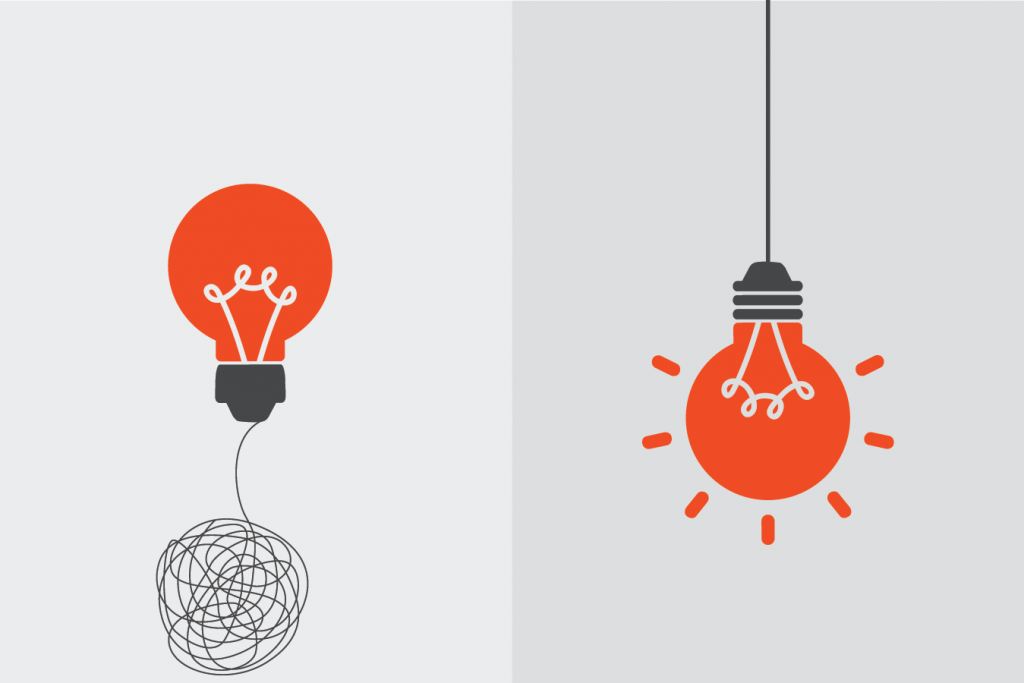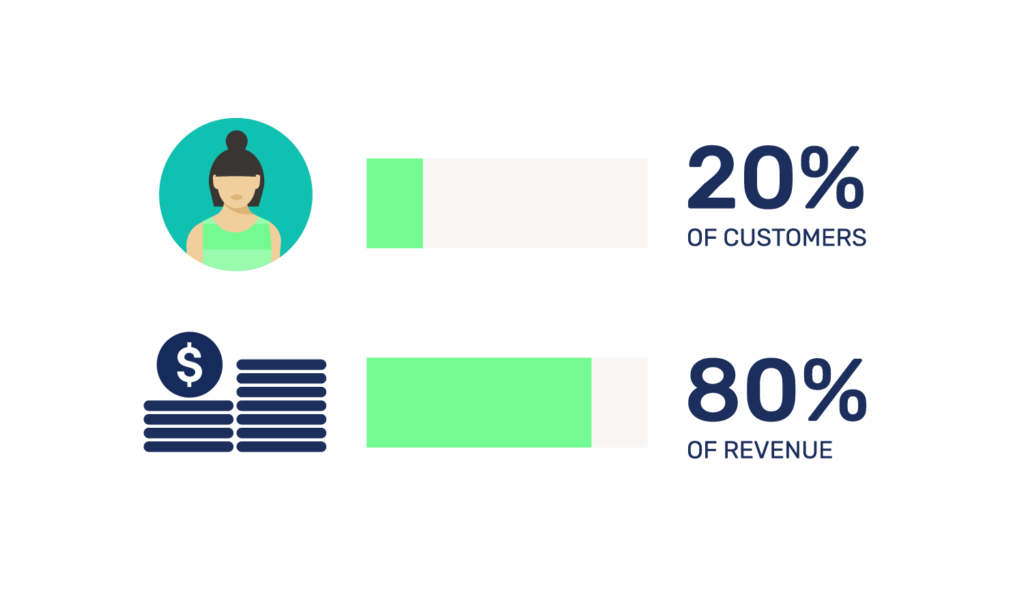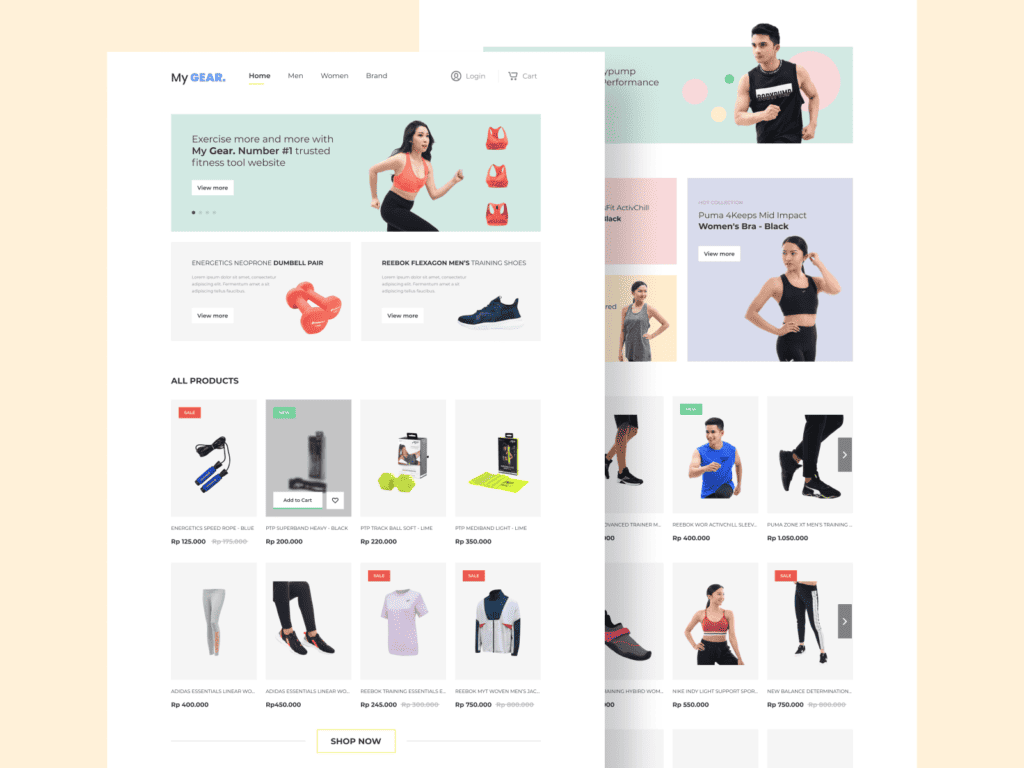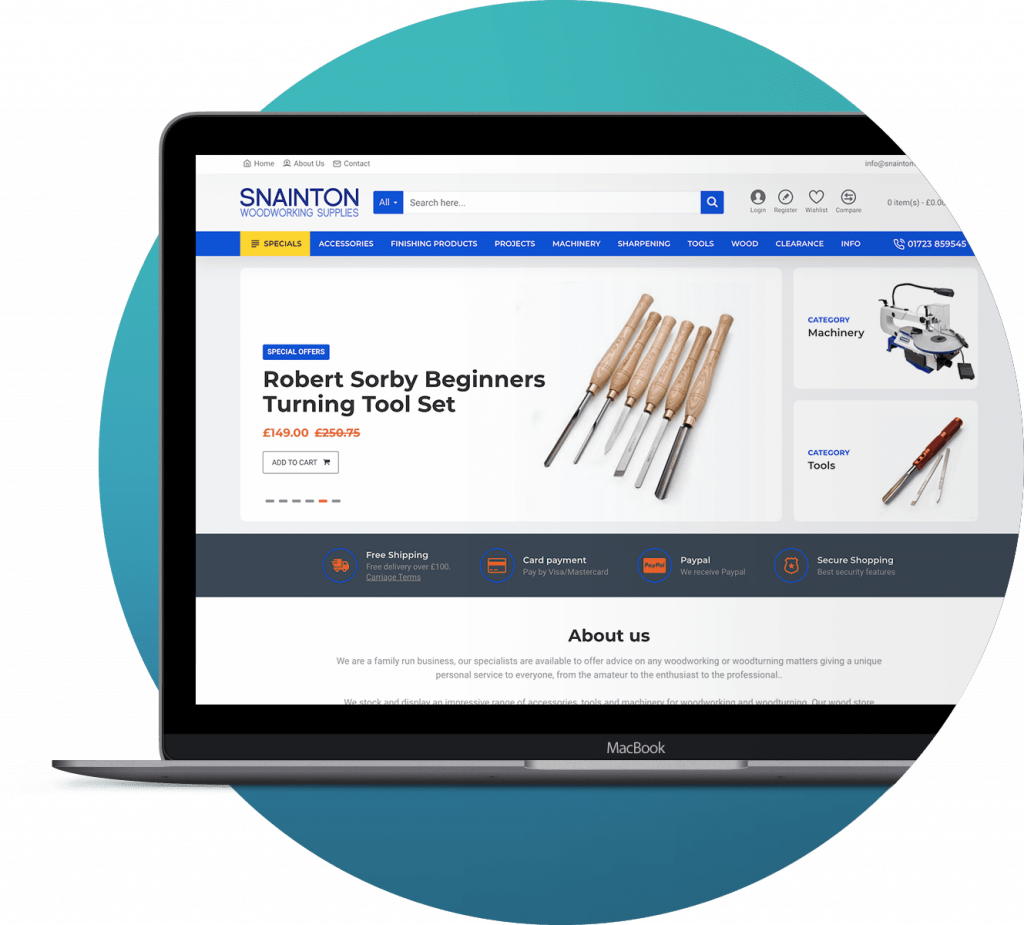How Design Can Be Your Most Valuable Sales Tool
How do you convert a visitor into a customer? It's all about persuasion—and design can be your most valuable tool.
Most business owners believe creating a good logo design or website is their top priority. But the truth is that your most significant value isn't found in your visual assets. You might inadvertently sabotage your success if you're not actively managing your design process.
This is because you also create the sales pitch when designing the product. Your brand, your marketing materials, and even the way you present yourself to potential clients—everything is rooted in how you craft a compelling sales message.
I'm sure you have heard the saying “design is everything”. What does it mean? In this article, I will explain what design is all about, why it can help your business and how to use it as a sales tool.
Table of Contents
What Makes a Great Design?

Three significant factors are involved in designing a product or service: functionality, style and marketing.
Functionality relates to how the product or service will meet the customer's needs. The designer considers ergonomics, ease of use, reliability and safety. Style is concerned with the design and presentation of the product or service. Marketing involves advertising, promotion, sales, and pricing.
The fundamental principles of good design involve:
- Good function – a product or service should work well. It should be safe, easy to use, reliable, and high-quality.
- Good style – it should look attractive and be well made. It should be attractive, clean and elegant.
- Good marketing – should be easy to find, easy to buy and competitively priced.
Good design involves making the most of all these three areas. For example, you wouldn't design a car seat that was hard to use and poorly made. A product that wasn't safe would probably not sell well. A product that doesn't look attractive would not appeal to customers and, therefore, might not get sold.
The Four Elements of Good Design

Four key components define effective user experience design. They are usability, credibility, customisation, and consistency. If a product is poorly designed, it is not usable. Users cannot use it and get the job done because of either poor design or functionality. If the product has no credibility or is not tailored to the individual, the user does not believe it will work and will not buy it. If the user cannot customise the product to suit their needs, then it is not consistent. A well-designed product is usable, credible, customisable, and consistent.
Usability
People have a natural affinity for products that are easy to use and have intuitive functionality. If a product is well-designed, it is easy to use and understand. Users will feel confident using it and have no difficulty finding and completing tasks. It is also vital to ensure that the product is easy to navigate. For example, a website should be easy to follow and have straightforward navigation.
Credibility
People also tend to feel comfortable with products that look and feel authentic. This can be through branded packaging and labels, a professional product image, a website that is easy to navigate, and a well-presented web page.
Customisation
People are also drawn to products that you can customise to meet their specific needs. This means a product is flexible and adaptable. For example, a product suitable for the family with built-in storage options, various size options, and different handles and grips will be more likely to be bought. In addition, products that can be easily repurposed (such as clothes and toys) will be preferred.
Consistency
The final component of good design is consistency. This means that the user feels confident about the product and can expect it to perform the same way each time they use it. Consistency is critical in the food and beverage industry, where there can be many variations between products from different manufacturers. A product with a consistent look and feel will be more attractive to consumers regardless of brand.
Design Is About How People Interact With Products and Services

Do you know that your product experience is everything? It is not just the quality of your products but also how you interact with your customers that matters.
If your product is good but has a bad experience, it will ruin your reputation in the market. So, let us talk about the best five ways to help you create a perfect customer experience.
1 – Create a memorable brand identity
It is imperative to create a unique brand identity. Your product will be the first impression of your company to your customers. So, creating a unique brand identity would be best to make your customers remember your brand name.
2 – Be personal
Your customer will judge your company by your customer service. If you can give your customer a personal touch, it will make your business a success story.
3 – Deliver excellent customer service
If you provide good customer service to your customers, then it will boost your sales. If you can give good customer service to your customers, then it will make your company the best one.
4 – Use social media
Social media is one of the best platforms to help you interact with your customers. It is the most accessible and affordable way to get a personal touch with your customers.
5 – Engage with your customers
Engaging with your customers is the best way to get the best of your products. There is no better way to get positive customer feedback than by engaging with them.
These are the best five ways to create a perfect product experience. Follow these methods, and you will get a positive response from your customers.
Design Should Communicate Value

The term “value-based marketing” has been around for a while now. It's defined as marketing that relies on understanding customers' needs and wants and then delivering solutions that will create value for them. That sounds great, but what does it mean in practice?
The most common definition of value is the benefits of using a product or service. So if you have a new kitchen range, the benefit of cooking with it will be its ease of use and the speed with which food cooks. When we think of customer value, we imagine the things that will make our lives easier and more pleasurable. Value-based marketing is all about adding value in terms of customer experience.
Value is measured by how much customers like or dislike a product or service. But there's more to it than this. There are two other aspects of value that marketers need to understand and that they must communicate.
First, customers will want a product or service that fits into their lifestyle – that works for them and is relevant to them. This means they want something that will solve their problems and help them achieve their goals. It will be designed to meet their needs and not just to be a pretty thing. This aspect of value is usually called “fit.”
The second aspect of value is related to fit. It's the relationship between customers and companies that gives rise to value. In other words, value comes from the context in which a product or service is bought and used. It's the context that makes a product valuable. The fit and the context are inseparable; they're parts of the total experience.
We must look at the customer's context to determine how we can improve value-based marketing. We need to know the person who is buying the product or service. But that isn't easy to do. How can you determine the person who is buying a product or service?
Think of the last time you bought a product. What made you choose it? What were your motivations? You may have looked at the brand's price, quality, or reputation. You may have been attracted to a particular design. The packaging style, the type of print on the front of the package, the colours on the label, the logo, and the tagline. All these things are part of the overall value of the product. It's not just what the product costs; it's the experience of looking at it, handling it, holding it, opening it, and using it.
Value is always a result of your experience dealing with a product or service. It's also a function of the value you put on the product. If you are highly valued, you will pay a premium price for a product or service that provides the kind of value you expect.
The price will not reflect the value you want or expect to receive if you are a lower-value person. So how do you determine what value you expect and how can you ensure that the product you buy meets your expectations?
There are several things you can do. First, you can ask the customer. You can use a questionnaire to find out their current level of satisfaction. You can also look at their experience of buying a similar product.
You can also talk to your customers. You can send them a questionnaire and ask them for feedback. When designing a website, you could ask people who have used it what they like and dislike about it. You can also look at social media sites and ask people for their comments.
But you can't assume that what the customer says is right. It would help if you did your research. Ask your customers what they expect from a product or service. Find out what they would like to see and then work towards it.
By providing a context for the customer, you can build a relationship with them, one that will produce value for both parties.
Use Design to Help Customers Make Better Decisions

Design is a complex topic; the more experience you gain, the more complicated it can seem. But we all know that the success of any design project depends on many things such as good research, strategic planning, clear objectives, budgeting and, perhaps the most important, customer input.
This part will look at how designers can use the data collected from the customers they interact with to improve their own design decisions. This post will also introduce you to a design tool that could be invaluable in helping your design process run more smoothly and effectively.
Design Process
The first thing we should mention here is that design is a constantly evolving process. The best designs will evolve and grow as your product or service evolves. To ensure that this growth doesn't go out of hand, it's essential to understand that every new design is another opportunity to make mistakes and learn.
This also means that your design process should involve several different stages. You may already have a workflow for designing websites, but we suggest taking these stages and using them as a starting point for your process.
Customer Research
The first stage in the design process is to gather as much information about your customers as possible. This might include customer feedback, competitor research, market research and other sources of information. The more information you have about your customers and potential customers, the better you will be able to design products and services that meet their needs.
Understanding the customer's goals, pain points, and challenges can help you create a solution that addresses these problems. If there is a clear, concise way of expressing these needs, you may be able to create a solution that elegantly addresses them.
The key takeaway here is that you can only design something if you understand why you are doing it. Understanding your customers and potential customers allows you to create a product or service that solves their problems most effectively and efficiently possible.
Strategic Planning
After gathering as much information as possible about your customer, it's time to start thinking about what you want to achieve. Your goals are the reason you're creating a design, so it makes sense to have them firmly in mind from the beginning.
It's also important to remember that your customer may not be your ideal customer. That's okay; sometimes, they are not even real people! As part of the strategic planning process, you may want to try and identify the type of person who would be interested in buying your product or service.
This will help you focus on the features and functionality you think are most important to them. You can achieve this by asking yourself questions such as:
- What are their problems?
- Who are they?
- What do they need?
- Where can they get it?
- What would they be willing to pay for it?
- Do they need to know that you are an expert?
Design Is Emotional

Design affects customers' emotions, which in turn affects their buying decisions. In sales, this is known as emotion marketing. You can use design to create positive emotions, negative emotions, or both. You can also use it to build a brand that customers identify with.
The first step to using design in marketing is to understand people's emotions when they view your products or services. To do this, we need to learn about the four basic human emotions: happiness, sadness, fear, and anger. We can use these emotions to design attractive, scary, exciting, or trustworthy things, and then we can use those designs to influence customers. The more positive emotions your designs elicit, the more likely your customers will like your brand.
The most common emotion that customers experience while shopping is happiness. This means that if you design something that creates a sense of happiness in your customers, they are more likely to buy. The more positive emotions you create, your customers will likely like your brand. The best way to create a happy environment for your customers is to use bright colours and bold shapes. When customers are happy, they tend to spend more money.
Sadness is the second most common emotion. When customers feel sad, they may become angry. Sadness makes people want to avoid the things they feel are dangerous or painful. You can use this emotion to your advantage by creating things that make customers feel sad. The best way to do this is to use dark colours and low-contrast designs. Sad customers are more likely to buy if they have been given the option to buy a discounted item.
We can use fear to make customers feel safe. If a product has a design that makes them feel afraid, it is less likely they will buy it. One way to create a fear-inducing design is to use the three-colour rule. For example, customers will feel afraid if you use the three-colour rule in a product. They may feel that the product could explode or catch on fire. If you want to create a design that makes customers feel safe, you can use colours that go together and are brighter than the colours used in previous designs.
Anger is the least common emotion, but you can use it to increase sales. When customers feel angry, they are more likely to buy. You can use the three-colour rule to create a design that makes customers feel angry. The three-colour rule is simply using different colours that are in contrast to each other. For example, you can use blue, red, and green. This creates a feeling of being in danger.
The Importance of Design to Ecommerce Stores

When it comes to design, you must take care of the navigation bar and the background colour. As a website owner, you must design your website to ensure the best user experience.
Website design is the first impression that visitors will see. So, how your website looks can determine how visitors will react to your site.
Excellent Website Design Means Great Sales
Website design is the first impression that visitors will see. So, how your website looks can determine how visitors will react to your site.
First, a great website design is necessary to get the best conversion rate. A high conversion rate means higher revenue.
A good website design will attract visitors and convert them into customers. Your website should be clean and appealing to visitors.
The website design should be straightforward. Make sure that all the products and services are presented cleanly. If possible, don't use too much text or images.
Ensure your website is easy to navigate and can be read from any screen size. Your website design is one of the most important factors to consider if you want the maximum conversion rate.
How to Design a Sales-Focused Website

Your website is one of the essential marketing tools to attract customers and build your brand. But not all websites are built with customer focus in mind. A poorly designed website can negatively impact your business. Your website can make or break your business, so it's essential to have a sales-focused website.
There are three main components to a great website:
- Navigation
- Content
- Presentation
A well-designed website is easy to navigate and easy to read. If visitors have trouble finding what they're looking for on your site, they'll leave. Visitors will quickly give up if your site is hard to read and navigation is confusing. A good website includes clean, modern design elements and easy-to-read fonts.
Your website's content should focus on your target audience. What do they care about? What do you offer that no one else offers? What makes you unique?
Presentation is everything. Presentation is the single most crucial element of your website. Ensure that the colours, images, layout, fonts, and information are clear and easy to understand.
If visitors don't find what they're looking for on your site, they'll leave. Your website needs to make it easy for customers to find what they want. Your design must be consistent across all pages on your site. If visitors don't know what they're looking for, they won't find it.
Remember: You can't be successful if you don't focus on your customer. The best websites are built to attract customers, convert them into buyers, and help you achieve your goals.
It's crucial to design your website around your customers and your business. Your goal is to attract and convert visitors into buyers. A good website is easy to navigate and easy to read.
Conclusion
The more you know about your audience, the more effectively you can design your product for them. It is possible to make your designs beautiful without losing sight of their purpose. This is not an easy task; it requires a deep understanding of what is going on in the human brain and the ability to take that knowledge and apply it.
We can now apply the same principles to designing our digital products and experiences. When you know your audience, you can create products that they will love. But this isn't the only reason why design matters. Research has shown that when a product is well designed, it is much easier to sell.
If you have a product that needs a redesign, call us. We can make sure that your next project is the best it can be!
